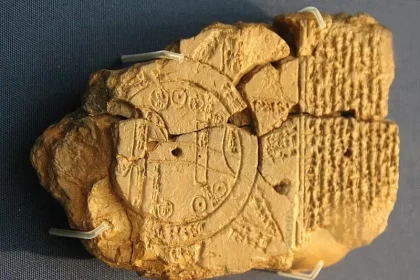Astronomers using the James Webb Space Telescope (JWST) discovered one of the most distant and therefore the first supernovae in the world. This explosion, which shook the universe about two billion years after the Big Bang, marked the death of a monstrous star.
According to RCO News Agency, The high energy of the supernova explosion AT 2023adsv could indicate that the properties of supernova explosions may have been different in the early universe.
According to Space, supernovae were different in the early universe. Especially when the exploding stars were stellar monsters 20 times the mass of our sun.
Detected as part of the James Webb program, this supernova could help scientists add more detail to the cosmic picture of stellar life and death they are building.
This supernova named AT 2023adsv erupted about 11.4 billion years ago in a massive primordial galaxy. Excitingly, this stellar explosion may be somewhat different from the supernovas that have recently occurred in the universe. In particular, this energetic explosion appears to have been very intense.
David Coulter, a researcher at the Space Telescope Science Institute (STScI), says: The first stars were significantly different from today’s stars. They were huge, they were hot, and they made really big explosions. We don’t know how many supernovae James Webb will find, but we can start moving into the early years of the first stars and hopefully see their explosions.
The story of stellar life, death and rebirth
The early universe was relatively boring compared to the modern universe, especially when considering its chemical contents. This is because the early universe was mostly made of hydrogen, the lightest and simplest element, with some helium, the second lightest element. In the early universe there were only a small number of heavier elements, which astronomers refer to as “metals”.
The first generation of stars, known as population three stars, were born from overdense clumps in this cosmic soup of light material. These stars started fusing hydrogen and helium and turning them into heavier elements.
When the most massive stars, more than 8 times the mass of the Sun, ran out of fuel for nuclear fusion, their cores collapsed to form black holes or neutron stars, while their metal-rich outer layers disintegrated in supernova explosions. became.
This process created clouds of hydrogen and helium in the first galaxies with heavy elements. The second generation of stars were richer in metal than the first generation.
This happened again for the birth of the third generation of much more intense metal stars. The third generation of stellar objects that are population one stars, to which our star, the Sun, belongs, have more metals.
Scientists think that the metal-poor nature of early stars caused them to have shorter lives. Also, the supernova explosions that marked the end of their lives were more violent than the deaths of the next generation stars.
2023adsv appears to have once been a very massive star, perhaps up to 20 times the mass of our Sun.
Stars of such monstrous size are rare in today’s universe. 2023adsv also exploded with an energy about twice the energy of the average supernova produced by our nearby massive stars. These early supernovae must have been extremely bright and therefore visible to James Webb. In fact, more than 80 ancient supernovae have been identified so far.
An early supernova
The chemical composition of AT 2023adsv means it is one of the earliest known supernovae.
This supernova is so far away, and thus so far back in time, that the universe was less than two billion years old when its light first traveled toward us. This means that this light was traveling towards us six billion years before the Sun was formed.

The high explosion energy of 2023adsv could indicate that the properties of supernova explosions may have been different in the early universe, but we need more observations to confirm this idea.
In 2026, NASA is going to launch its next big space telescope, the Nancy Grace Roman Space Telescope.
Current estimates suggest that Roman’s wide field of view will find thousands of early supernovae for James Webb’s sensitive infrared eye to probe.
end of message
RCO NEWS


















